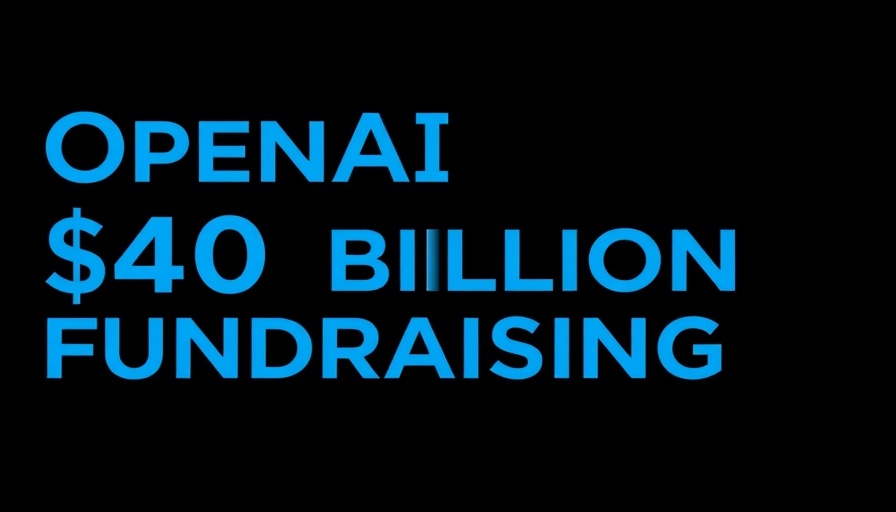
A Game-Changer in AI Funding: OpenAI's Financial Milestone
OpenAI has just made headlines by securing an unprecedented $40 billion in funding, marking an extraordinary chapter not only in its journey but in the tech industry overall. This massive investment solidifies OpenAI's valuation at around $300 billion, positioning it alongside some of the world's most valuable companies. With this kind of capital, the company aims to solidify its place as a leader in the AI sector, focusing on advancements that could redefine our interaction with technology.
The Motivations Behind the Investment
Investors, led by SoftBank, have expressed strong confidence in OpenAI. However, the funding clause requiring OpenAI to transition fully to a for-profit model by the year's end brings urgency to this situation. This transition is no simple task for a company built upon a nonprofit foundation, but it opens the door to potentially significant financial returns that could benefit investors and further fund AI innovations.
Explosive Growth in User Engagement
OpenAI's growth trajectory is staggering, boasting over 20 million paying ChatGPT users and a notable increase in subscription revenue. Analysts predict an annual revenue of around $12.7 billion, highlighted by $415 million earned monthly from subscriptions alone. As the numbers speak for themselves, it signals a burgeoning interest in AI applications and a robust ecosystem supporting this trend.
Future Prospects and Opportunities
With plans to utilize part of this funding for their Stargate project—a collaboration with Oracle and SoftBank—OpenAI is set to create data centers capable of supporting extensive AI model training. This investment underscores an aspiration toward achieving artificial general intelligence (AGI), which promises a leap forward in AI capabilities. If successful, the potential applications of AGI could surpass current expectations, transforming various sectors of the economy from healthcare to education.
The Broader Implications for the AI Landscape
This historic funding round not only elevates OpenAI's profile but also catalyzes shifts in the entire AI industry. As the company rampages ahead, other players will need to adapt in order to compete, which may lead to innovations across the board. This deal not only reflects confidence in OpenAI but highlights the relentless pace at which AI technology is evolving.
As we continue to witness this revolutionary moment in technology funding, it's crucial for businesses, policymakers, and consumers alike to stay informed. The developments at OpenAI may serve as a precursor to the future of AI—and its implications could reach far beyond the tech world.
 Add Row
Add Row  Add Element
Add Element 



Write A Comment